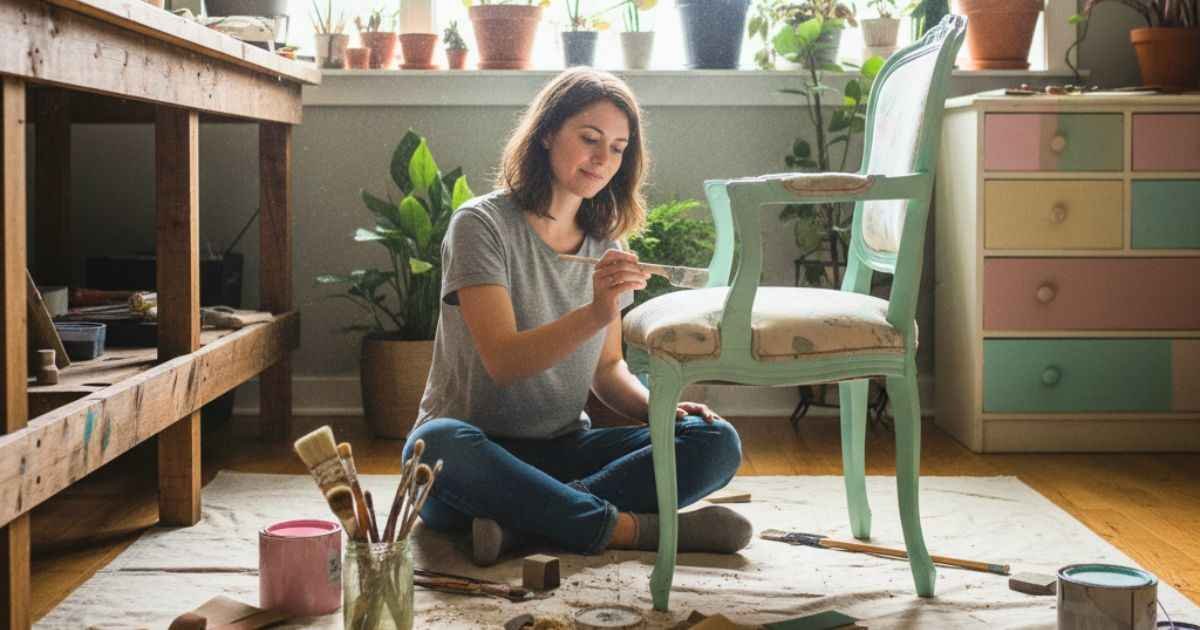The world is increasingly focused on sustainability, and upcycling old furniture has become a popular way to give tired pieces a new lease on life. Not only does it help reduce waste, but it also allows you to express your creativity while adding unique, personalized items to your home. Whether you have a worn-out chair, a scratched table, or a forgotten dresser in the attic, this DIY guide will walk you through the essentials of transforming old furniture into functional and stylish pieces.
Step 1: Assess and Plan
Before diving into paint or tools, take a careful look at your furniture. Identify any structural damage, missing parts, or areas that need sanding or repair. Planning your design is crucial: decide whether you want to restore the piece to its original style, give it a modern twist, or go for a completely unique look. Sketching a rough idea can save time later and ensure your vision is clear.
Step 2: Gather Your Materials
Once you have a plan, gather the necessary supplies. Sandpaper, brushes, primer, paint, and varnish are common essentials. Depending on your project, you may also need wood filler, screws, or new handles. For those who need high-quality tools and materials, Tradefix Direct offers a wide range of DIY supplies, making it easier to find everything you need in one place.
Step 3: Clean and Prep the Furniture
Cleaning is a crucial step often overlooked. Remove dust, grease, or old finishes using a gentle cleaner or a mix of soap and water. If the surface is rough or chipped, sand it down to ensure the new finish adheres properly. Fill in cracks or dents with wood filler, then sand again for a smooth surface. Prepping your furniture thoroughly ensures a professional-looking result.
Step 4: Painting and Finishing
Choosing the right paint or stain is where creativity comes in. Chalk paint is popular for a vintage look, while a glossy acrylic or enamel finish can create a more modern appearance. Apply primer first if you are covering dark wood or want extra durability. Then, layer your chosen paint evenly, allowing each coat to dry completely before applying the next. Once the paint is dry, seal the surface with a protective varnish or wax to increase longevity.
Step 5: Adding Personal Touches
Upcycling is all about personalization. Consider swapping out old knobs for new, adding stencils, or experimenting with distressing techniques to give your furniture a unique character. Even simple touches like lining drawers with patterned paper or adding fabric cushions can transform an ordinary piece into a statement item.
Step 6: Enjoy and Share
Finally, place your upcycled furniture in your home and enjoy the satisfaction of giving something old a new life. Upcycling not only saves money and reduces environmental impact but also provides a sense of accomplishment and pride in your DIY skills.
With a little time, effort, and creativity, upcycling old furniture can turn forgotten pieces into functional works of art. By planning carefully, prepping thoroughly, and choosing the right supplies from trusted stores, you can tackle DIY projects that are both sustainable and stylish.
You May Also Like: Acryldach: Truth, Benefits, Risks & Safe Acrylic Roofing Guide

I’m Emma Rose, the founder of tryhardguides.co.uk, and a content creator with a passion for writing across multiple niches—including health, lifestyle, tech, career, and personal development. I love turning complex ideas into relatable, easy-to-digest content that helps people learn, grow, and stay inspired. Whether I’m sharing practical tips or diving into thought-provoking topics, my goal is always to add real value and connect with readers on a deeper level.
Discover more from Try Hard Guides
Subscribe to get the latest posts sent to your email.

